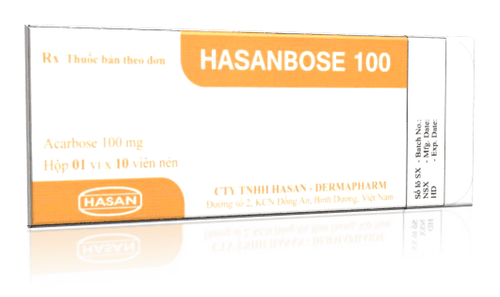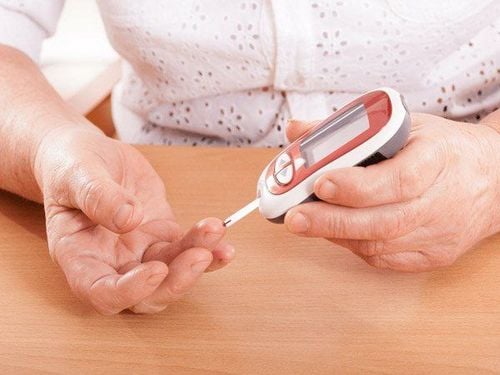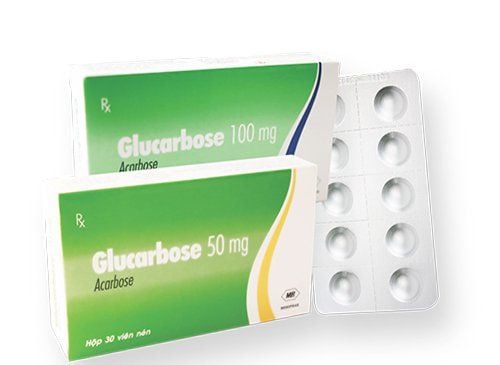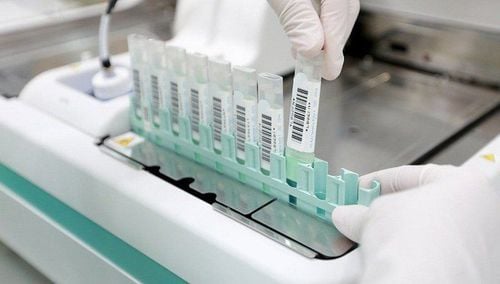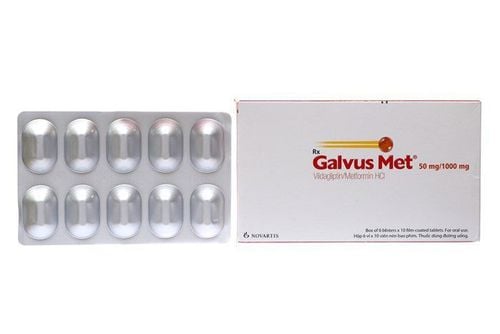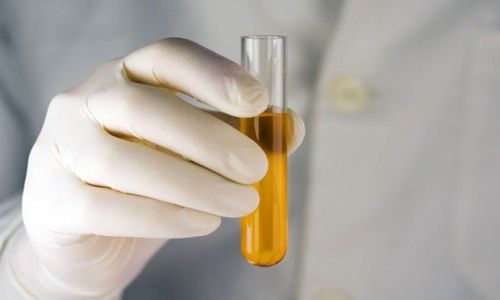This is an automatically translated article.
The article was written by Dr. Do Thi Hoang Ha - Doctor of Biochemistry, Laboratory Department - Vinmec Hai Phong International General Hospital.Type II diabetes causes a lot of complications if not treated and controlled properly blood sugar levels. Therefore, for early diagnosis of type II diabetes, people with risk factors should go for early screening tests.
1. Who should be tested for type 2 diabetes?
People aged 45 years and older have a higher risk of developing type II diabetes than younger people, along with the following associated risk factors:
+ Obesity (those with diabetes) BMI ≥ 23 (According to IDF 2005): People who are overweight or obese are at risk of type II diabetes due to excess body fat, which promotes insulin resistance. In the family, there is a person with diabetes in the next generation (father, mother, brother, sister, biological child..)
+ Other factors: people with hypertensive disease (blood pressure above blood pressure). 130/85 mmHg), dyslipidemia (especially when HDL-C is below 0.9 mmol/L and Triglyceride is above 2.2 mmol/l), polycystic ovaries, metabolic syndrome, intolerance Glucose, women who have had a history of gestational diabetes or have given birth to a large baby weighing more than 3600 grams, multiple spontaneous abortions, stillbirth, inactivity, etc. are at risk of developing type diabetes. II higher than other subjects
When a person has more risk factors , the more likely that person has type II diabetes. And due to the development of society as well as the current demand for drugs, food and chemicals, the age of patients with type II diabetes is getting younger and younger, so it is important to go for a health check-up and take a glucose test. Periodic blood sugar is very important in early diagnosis, detection and good control of diabetes, avoiding possible complications.

2. Tests used to diagnose type 2 diabetes
In the order of conducting diagnostic tests for type II diabetes (WHO-2011), the following tests and tests are used, respectively:
2.1. Quantitative fasting plasma/serum glucose This is the routine test, most commonly used by clinicians today to diagnose diabetes. Although blood glucose can be elevated in stressful situations, blood glucose is primarily elevated in diabetes. The fasting plasma glucose level is usually between 4.1 - 5.5 mmol/L (73.8 - 99 mg/dl).
When the fasting plasma glucose is between 5.6 - 6.9 mmol/l (100.8 - 124.2 mg/dl): pre-diabetes (impaired fasting glucose tolerance) according to the American Diabetes Association (American Diabetes Association) criteria. ADA) 2020.
If the fasting blood sugar (after 8 hours of eating) is ≥ 126 mg/dl (≥ 7.0 mmol/l) in two consecutive tests at least 24 hours apart, it is considered diabetes.
2.2. Quantification of serum/plasma glucose at any time According to WHO and ADA 2020, one of the criteria for the diagnosis of diabetes is a blood glucose test at any time ≥ 200 mg/dl (≥ 11.1). mmol/l) with plasma accompanied by classic symptoms: thirst, drinking, polyuria, weight loss.
With any quantitative blood glucose test, the clinician does not need to be concerned with whether the patient has eaten or for how long. If any blood sugar test is ≥ 11.1 mmol/l repeated at least 2 times and at least 24 hours apart, the patient can be diagnosed with diabetes.
If the blood sugar result at any time is <7.8 mmol/L, additional glycemic tolerance test is needed to confirm.
2.3. Oral Glucose Tolerance Test Oral glucose tolerance test should be performed according to World Health Organization guidelines: The patient fasts from midnight before the test, taking an equivalent amount of glucose. with 75g glucose, dissolve in 250-300ml water, drink for 5 minutes; for the previous 3 days the patient ate a diet containing about 150-200 grams of carbohydrates per day.
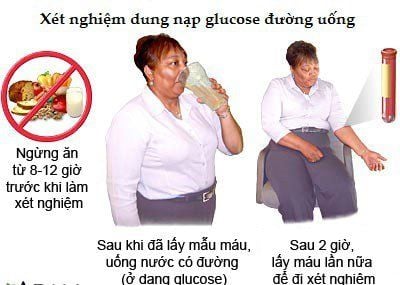
Plasma glucose at 2 hours after doing 75g oral glucose tolerance test (OGTT) ≥ 200 mg/dL (or 11.1 mmol/L) is one of the diagnostic criteria for diabetes Disconnect the road.
2.4. Measuring blood glucose 2 hours after eating Sometimes doctors will use a quantitative blood glucose test 2 hours after eating to aid in the diagnosis of diabetes. The patient's meal will contain about 100g of carbohydrates and other nutrients.
After eating, glucose levels usually peak after 1 hour and return to pre-prandial levels within 2-3 hours. In people without diabetes, blood sugar levels after 2 hours are usually <6.6 - 7.7 mmol/L (120 - 140 mg/dl). In patients with type II diabetes, there is a decrease or loss of insulin response after a meal, resulting in elevated blood glucose levels.
If the blood sugar test 2 hours after eating has a result of plasma glucose concentration ≥ 11.1 mmol/l, it is a diagnostic sign of diabetes. However, this test is now rarely used, although it is quite simple, for reasons of difficulty in controlling the composition of the patient's meals as well as the difficulty of accurately controlling the timing of meals.
2.5. Urinary glucose test Under normal conditions, glucose is filtered through the glomeruli and completely reabsorbed by the proximal tubules. Thus, a normal healthy person will not see glucose in the urine. The ability of the renal tubules to reabsorb glucose is fully effective when the blood glucose level is ≤180 mg/dl (≤ 10 mmol/L), exceeding this value is usually seen in the presence of glucose in the urine.
However, it is important to note that the renal threshold for glucose varies from person to person and the following cases may occur:
The patient definitely has diabetes but does not see glucose in the urine (elevated renal threshold or No kidney damage) People who do not have diabetes but have the presence of glucose in the urine (due to tubular damage). Therefore, the urine glucose test is a useful test with reference value in the diagnosis and treatment of diabetes, but it is not a reliable enough test to make a definitive diagnosis of diabetes.
2.6. HbA1C test HbA1C also known as glycosylated Hemoglobin (hemoglobin of red blood cells is saturated with glucose). Because of binding to hemoglobin, this saturation persists throughout the average 120-day life of red blood cells. Therefore, by measuring HbA1C, the doctor can determine the average blood glucose concentration in the previous 2-3 months of the patient.
HbA1C concentration ≥ 6.5% (tested by standardized NGSP method) is one of the diagnostic criteria for diabetes, but this test is even more meaningful in monitoring treatment with other diseases. diabetic patients.
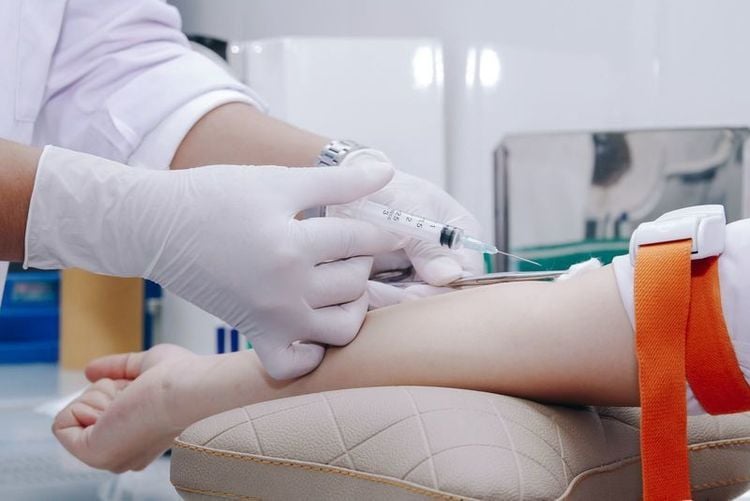
3. Notes before doing diagnostic tests for type 2 diabetes
When doing tests to diagnose type II diabetes, especially the fasting blood glucose test, the patient is often noted by the doctor the following:
The patient must fast completely (do not drink soft drinks). , can drink filtered water, boiled water to cool) at least 8 hours (usually overnight fasting from 8-14 hours). Blood samples after collection must be transferred to the laboratory within 15 minutes if blood cannot be taken with a sodium fluoride tube to avoid hypoglycemia. Vinmec International General Hospital is one of the hospitals that not only ensures professional quality with a team of leading medical professionals, a system of modern equipment and technology. The hospital provides comprehensive and professional medical examination, consultation and treatment services, with a civilized, polite, safe and sterile medical examination and treatment space. Customers when choosing to perform tests here can be completely assured of the accuracy of test results.
Please dial HOTLINE for more information or register for an appointment HERE. Download MyVinmec app to make appointments faster and to manage your bookings easily.





